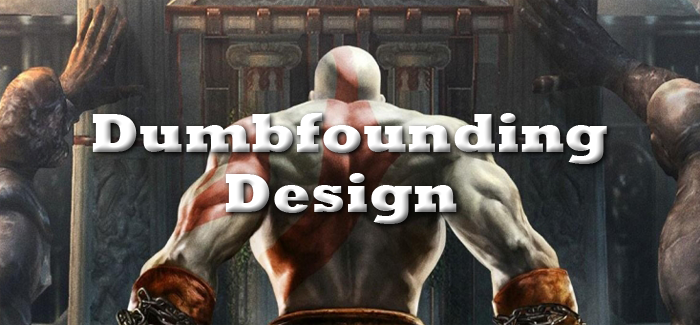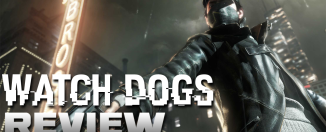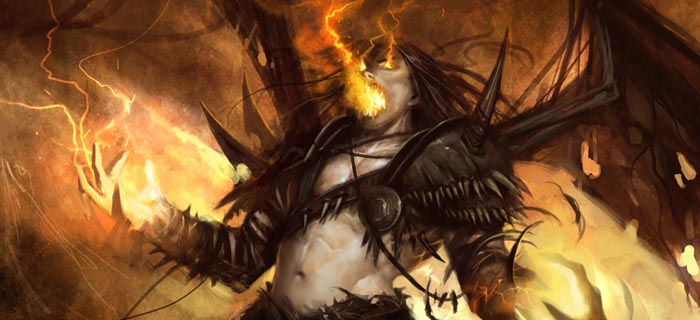Dumbfounding Design: Press X, Square, or E to Not Die
It’s moving backwards in time, and it’s getting a new name. This is Dumbfounding Design, the new Three Tip Burst. Rather than providing tips for games, something I can do with impunity, I thought I’d examine some of the industry’s most popular design choices. They might either be good or bad, useful or annoying. Either way, I’m going to give an example of where they work, and another where they don’t, then explain why. In great detail. Because that’s what I do.
So. The quick time event.
As if the title didn’t tell you enough.
The basic concept goes back to gaming’s roots. In side scrollers where you absolutely must keep moving, the QTE is a survival necessity. Pressing A to jump into a Sonic, a Mega Man, or a Super Mario was technically a quick time event in the simplest sense. The one most recognizable feature that defines QTE’s — the on-screen notification — was of course absent.
Without going into the history of the QTE, I’ll simply go where you are waiting for me to go: God of War. While the quick time event wasn’t GoW’s invention. The huge button-in-the-middle-of-the-screen thing wasn’t new either. Instead, it was Kratos’s explosion of popularity and the game’s overall quality that allowed the QTE to slide by, a constant but tolerable nuisance in a great title.
The problems with success in a creative medium are legion, but one of the most systemic is the occurrence of copycatting. And boy, are there some bad copycats out there. I won’t name them, but I’m sure you can think up some real “winners” in this category.
The rampant use of QTE’s following the GoW series’s success has invariably lead to the concept’s almost universal hatred, at least from the public. It still pops up in games because, for some reason, developers don’t yet know how to do certain sequences any other way. Either that, or they’re too lazy or too rushed for time to do anything more.
Okay, Xiant, but were they ever a good thing?
A good thing? Probably not. While the QTE is an attempt to keep the player engaged in an otherwise cinematic moment, its actual use in most games is sporadic. If you’re going to do something, do it big and do it often. GoW got it right in that respect, so that’s what I’ll focus on.
From the first fight with the Hydra in the original God of War, the game shows you its completely unabashed reliance on the mechanic. It makes no apologies about the constant slew of QTEs. You even use them in minor skirmishes with Medusas, skeletons, and other enemies. However, unlike most QTEs in games, God of War doesn’t make you press square to not die. Instead, it takes the correct approach.
Press square to be a total fucking badass.
I can count on two hands the number of times I had to mash my square button to keep Kratos from being crushed. I cannot count, on the other hand, the number of times I pressed square to pull a gorgon’s head from its shoulders, score some sweet tail, or put out the eyes of a deity by pressing buttons at the right time.
There will be those who argue that there must be a better way of doing it, even doing right like God of War does. I would agree. The creativity of the industry’s best will, I’m sure, come up with something. However, time constraints, the limitation of controllers (and keyboards), and the QTE’s ease of implementation all assist in prolonging their use. Am I asking you to accept them at all times? No, not at all. When used correctly, the enrich the experience and make you the player feel powerful. But even at those time, I find them tolerable at best.
And now the fun part.
In the few days I’ve spent considering the quick time event, I couldn’t come up with any examples of games that did QTE’s as well as God of War. The Uncharted series attempts to, and sometimes comes close. The prime offenders, though, are first person shooters, and today’s bloody sacrifice is my favorite series: Battlefield. More specifically, Battlefield 3’s single player. I’ve argued against it once before, but I want to talk more completely about why BF3’s specific type of event is so poorly designed.
First and most damning is the random times the notifications pop up. And this is not isolated to BF3. Unlike God of War, BF3 and shooters like it put quick time events at times where only quick reaction time and even a little trial and error can save you.
While controlling Kratos, you know and expect a new event every couple minutes, so your thumb’s all set to mash or turn the control stick in the proper direction. Many sequences in BF3 are exactly what make the quick time event a pejorative design decision. You don’t press the right key at just the right time, you’re dead, or the bomb goes off, or whatever. In any event, the game requires the player to restart from the last checkpoint. And since most games have bad checkpoint timing, you’ll be doing this sequence of QTE’s and several before it, equally as poorly designed.
But like I mentioned in the linked post, BF3 is by far the worst offender I can think of. Not because of implementation, but because of context. DICE touted their game as being “war and all that represents,” yet here we are pressing keys to punch a guy. I was almost willing to forgive them until I had to press E to not nuke New Fucking York. Give me something more substantial if I’m going to stop a nuke please. Seriously. Give me an epic gun battle, give me the ability to move with WASD or the control sticks, give me something.
Something that isn’t, “Press E to avoid the largest catastrophe in US history.”








I’ve always liked QTEs because I feel like they accomplish something most games are not equipped to do, and that’s have your character perform an action that isn’t part of their moveset. Just as in real life, there are certain times where you must react FAST to something, and the solution isn’t always Jump, Shoot, or Crouch.
That said, the more I think about it, the more it seems these kinds of actions just shouldn’t exist in a game. The scope of the game generally IS the controls. If your character is good at swimming and jumping, story elements where he/she is driving and talking probably shouldn’t be controlled by the player. They probably also shouldn’t drag on for hours.
I agree that they allow for outside of mechanics play, giving a cinematic feel to a more stock experience.
As you say, though, if you can’t do it naturally given the basic controls, why’s it there in the first place? I wouldn’t go so far as to say that things you can’t otherwise do should be gone completely, as there are other ways to do them. Make them a loading screen (a fast one), make it a minigame, make it something that isn’t just “Press X to drive”.
Oh my fucking lord the second part of Resident evil four had a BOSS fight that had NO COMBAT JUST QTE’s.
That’s terrible. Though you could make that argument about every GoW boss fight, if every single action taken to defeat the boss was a QTE, that’s about as lazy design as I’ve ever heard of.
I think part of the reason why QTE are there is so that players are forced to watch the cinematic instead of skipping ahead or overall not paying attention. The problem is, you can’t do it too few times or it’ll never sink in, but you can’t overuse it or the player gets mad as all hell. Perhaps more importantly, if you want to have the player watch your cinematic, make it worth watching. However, I’ll leave the rant on the poorly written stories of the games of today for another time.
Asura’s Wrath was half QTEs, part fighting, and part shooting. Like you said with GoW, it was easy to expect when a QTE was coming up. The game was basically an interactive anime, but I still enjoyed it due to the insanity of what happened in the game.